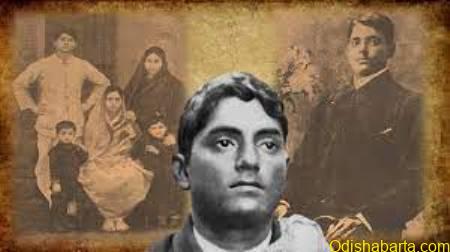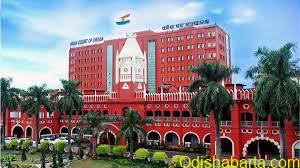Bagha Jatin: This famous freedom fighter who martyred opposing British forces had ties to Odisha

Prasanta Patnaik ,Senior Journalist
India’s liberation movement was one of the world’s longest; just as Rome took a long time to come into existence, it didn’t last for just one day or one month. In a similar vein, India’s independence was not won solely through the efforts of a small group of liberation warriors.
The youngest freedom fighter in India’s campaign for independence, Saheed Baji Rout, was just 13 years old when he was slain by British officials for refusing to take them across the river as a protest.
His selfless act was on par with that of any other famous person in history. Another outstanding freedom fighter who played a crucial role in the fight for India’s independence is Jatindranath Mukherjee, also known by his stage name Bagha Jatin.
A Glimpse of the history.
On December 7, 1879, Jatindranath was born in Bengal Presidency, British India, in Kayagram Village, Kushtia District (current-day Nadia, Bangladesh). He was the Royal Bengal Tiger, a predator so powerful that even put the British Empire in danger.
Jatin’s mother, a poetess, reared him when his father passed away when he was just five years old. Jatin’s sense of patriotism and spirituality were laid out by his mother’s affinity for religion. He also took on the strong, courageous, and masculine qualities of his late father, who loved horses and was well-known for them.
As Jatin entered his teenage years, the villagers came to admire him for his daring and fierce sense of patriotism. He inspired locals to stage plays and host dramas about independence, which is sometimes attributed to his encounter with the Nobel Prize–winning poet Rabindranath Tagore.
He enrolled in the Calcutta Central College (now Khudiram Bose College) in 1895 after graduating from Krishnanagar Anglo-Vernacular School to pursue Fine Arts. He also participated in steno typing instruction during this time. Being a revolutionary by nature, he was drawn to Swami Vivekananda’s powerful Vedanta philosophy and ultimately chose him to be his mentor. He first became aware of Vedic teachings and celibacy here (Brahmacharya).
Jatin’s potential was recognised by Swami Vivekananda, who enrolled him in a gym where he trained in wrestling and other forms of physical fitness. Jatin soon left colonial education and began working for Trihoot Courrier editor and lawyer Pringle Kennedy.
From Bagha Jatin to Jatindranath Jatin had four children with his wife Indubala Banerjee by the year 1900 after getting hitched. When Jatin’s oldest son Atindra passed away in 1906 and his wife left him behind while she went on a pilgrimage, that was the major turning point in his life. But he soon showed signs of becoming a more resolve guy.
When Jatin visited his village in 1906, he discovered that the residents were afraid because a dangerous Bengal Tiger had been spotted nearby. Jatin, a brave young man, went on a tiger hunt in the adjacent bush, where he killed the large animal by himself. Because of this, he received the honorific title of Bagha Jatin (Bagha means Tiger in Bengali/Odia) and a silver shield bearing the title “BAGHA” and an engraving of his combat scene from the Government of Bengal.
Freedom fight, fatalities, and consequences:
Anushilan Samiti and Yugantar were both secret societies of revolutionaries that battled the British Empire, and Jatin was one of their founding members.
To agitate the authorities, he engaged in a number of antisocial activities and frequently succeeded in forcing them to submit. Jatin rose to prominence when he caused chaos during the Prince of Wales’ visit to India in 1905, which helped him become very famous because it was one of the colonial regime’s extensive surveys of the Indian subcontinent.
Bagha Jatin was first detained on January 27, 1910, on suspicion of killing Inspector Shamsul Alam, the investigating officer in the Alipore bomb case, but was later freed. He was then detained once more, along with 46 other people, in connection with the Howrah-Sibpur conspiracy case, also known as the Howrah Gang Case.
To raise money to buy weapons and ammunition from German sources to combat the establishment, Jantin’s Yugantar organisation began a fresh series of crimes. The British were incensed by this, and they immediately began a manhunt to put a stop to the anti-social behavior.
Martyrdom:
Bagha Jatin fled Bengal and took refuge in the Mayurbhanj district of Odisha, where he purchased weapons that were intended to travel via the Balasore route that had been tracked by British intelligence. After two days of trekking through Mayurbhanj’s thick jungles, Jatin and his companions arrived at Balasore only to be gheraoed by numerous police officers.
The legendary clash that took place in the Chashakhand area of Balasore between revolutionaries led by Jatin and the police force commanded by officer Charles Tegart lasted for almost 75 minutes. While Jatin suffered severe injuries, Chittapriya Roy Choudhury died instantly.
Other accomplices were apprehended, including Manoranjan Sengupta, Niren Dasgupta, and Jyotish Pal.
Bagha Jatin passed away from his wounds on September 10th, 1915, while receiving care at the Balasore hospital. Manoranjan and Niren, two of his associates, were executed in prison while Jotish was transferred to Cellular Jail in the Andaman Islands.






